If you have a pregnant dog, you may be wondering if she will need a C-Section surgery to deliver her puppies and how much is a dog C-Section surgery?
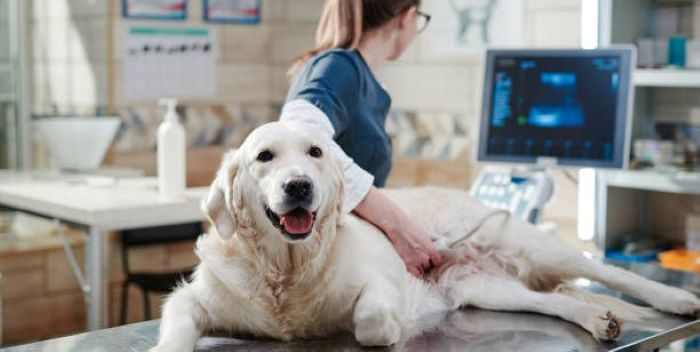
- In order to remove the puppies, a dog must have a cesarean section, which entails creating an incision in the dog’s belly and uterus.
- If the dog has a narrow pelvis, a big litter, is in breech position, or has any other issues that preclude a normal birth, it can be essential.
- According to the American Kennel Club, Around 15% of dog births require an active C-Section.
- However, the price of this process can differ significantly based on several variables, including the location, the clinic type, the breed of the dog, and the intricacy of the operation.
In this article, we’ll go over each of these aspects in more detail and offer some advice on how to be ready for a C-Section operation.
Along with several potential alternatives to a C-Section procedure, we’ll also go through how to choose the one that’s ideal for your dog and your budget.
Contents
How Much Is a Dog C-Section Surgery?
A C-Section surgery is a major expense that can vary widely depending on several factors.
At the low end of the spectrum, you may anticipate spending about $1,000, however if you prepare ahead of time, you might pay less. You might pay up to $3,000+ in some circumstances, such as an urgent after-hours surgery.
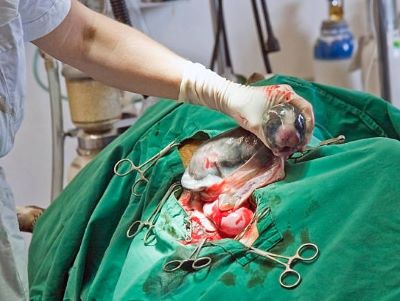
The average cost of a dog C-Section surgery in the US is between $500 to $4000, but it can be higher or lower depending on the location, the type of clinic, the breed of dog, and the complexity of the surgery.[1]
How much is a dog C-Section surgery, factors that influence the cost of a dog C-Section surgery are:
1). Location
Because various locations may have varying costs, taxes, or fees for veterinary services, the clinic’s location might have an impact on the price of a C-Section operation.
2). Type of Clinic
The type of clinic where the procedure is done can have an impact on the cost of a C-Section since some clinics may have more modern facilities and equipment, while others may provide discounts or subsidies for particular breeds of dogs.
3). Breed of Dog
The cost of a C-Section operation may vary depending on the breed of the dog since some breeds may have more challenges or complications during pregnancy or birth that may necessitate a planned or unplanned C-Section operation.
4). Complexity of the Surgery
The cost of a C-Section can vary depending on the complexity of the procedure, since some situations may call for more time or resources than others. It can also have an impact on the dog’s recovery and postoperative care for her puppies.
How to Prepare for a Dog C-Section Surgery?
A C-Section surgery is a major procedure that requires careful planning and preparation.
You should work with your vet to schedule the surgery at the optimal time, based on your dog’s hormone levels, vaginal cells, or fetal age.
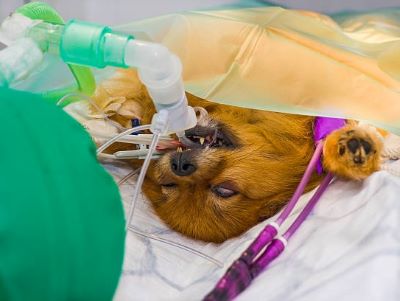
You should also stop using flea and tick products on your dog one week before the surgery and apply an Adaptil collar three days before the surgery to reduce stress.
Additionally, you should give your dog a bath a day or two before the surgery to make sure she is as clean as possible.
What to Do Before and After the C-Section Surgery
a). Pre Dog C-Section Surgery Care: To prepare your dog for the surgery, you should follow your vet’s advice on when to stop giving her food and water. This will help prevent vomiting and aspiration during anesthesia.
You should also pack some items that you and your dog will need at the clinic, such as blankets, towels, food, water, toys, and a crate. These will make your dog more comfortable and help her relax.
b). Post Dog C-Section Surgery Care: After the surgery, you should keep a close eye on your dog and her puppies. Make sure she does not fall or injure herself or her puppies while recovering from anesthesia.

You should also feed her small amounts of food and water every 15 to 30 minutes for the first 24 hours. This will prevent vomiting and dehydration. You should also check her temperature regularly with a thermometer.
If her temperature rises above 104°F (40°C), you should call your vet right away. This could indicate an infection or a complication from the surgery.[2]
Pros of Dog C-Section Surgery
- It can save the life of the mother dog and her puppies in case of an emergency, such as uterine rupture, infection, hemorrhage, or fetal distress.
- It can prevent prolonged or difficult labor that can cause exhaustion, pain, or injury to the mother dog or her puppies.
- It can allow for more control and precision over the birthing process by giving a visual field for the doctor to operate on.
- It can avoid fetal absorption, which is when the fetus gets reabsorbed inside the dam and is no longer present in the womb.
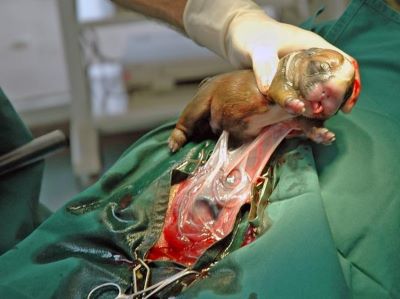
Cons of Dog C-Section Surgery
- It is a major surgery that requires anesthesia and monitoring of the conditions of both the mother dog and the puppies.
- It can be expensive, depending on several factors, such as the location, the type of clinic, the breed of dog, and the complexity of the surgery.
- It can have some risks and complications, such as infection, bleeding, wound dehiscence, or milk production problems.[3]
- It can have some emotional and ethical implications for the owner and the dog, especially if spaying is performed at the same time.
Alternatives to a Dog C-Section Surgery
A C-Section surgery is not the only option for delivering puppies. Depending on the situation, some dogs may be able to have a natural birth, an induction, or a spaying.[4]
Each of these alternatives has its own advantages and disadvantages, and they should be discussed with your vet before making a decision.
Natural Birth
For the majority of dogs, a natural birth is the best option, but for particular breeds or circumstances, it might not be feasible or safe.
If difficulties emerge during a normal delivery, careful observation and veterinary assistance are required.
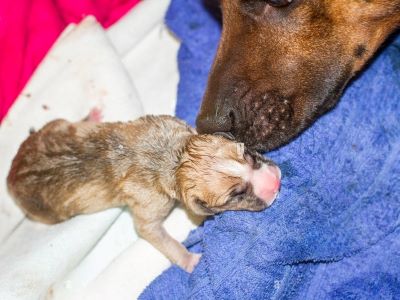
a). Pros: Compared to a C-Section, it is safer and less intrusive. Both anesthetic and surgical intervention are not necessary. For the dog and her puppies, it is more natural and less stressful.
b). Cons: For some breeds or circumstances, it might not be feasible or safe to do so. Factors including fetal discomfort, uterine inertia, or mother weariness may make it more difficult.
If difficulties develop, careful observation and veterinary assistance may be needed.
Induction
An induction is a medical procedure that stimulates labor and contractions. It may be an option for overdue or small litters, but it may not work for all dogs and it may cause side effects.
An induction should only be done by a vet.
a). Pros: It could be a possibility for dogs that are past due or who have a tiny litter that isn’t exerting enough pressure on the cervix. It could enable the dog to give birth vaginally instead of requiring a C-Section.
b). Cons: It might not be effective for all canines, and it could have negative consequences including vomiting, diarrhea, or fetal discomfort. Only a veterinarian should do it, and the dog and her puppies should be closely watched.
Spaying
The ovaries and uterus are surgically removed during spaying. Although it will put an end to the lives of the puppies, it may be a viable choice for significant difficulties or unintended pregnancies.
There may be moral and emotional repercussions to spaying.
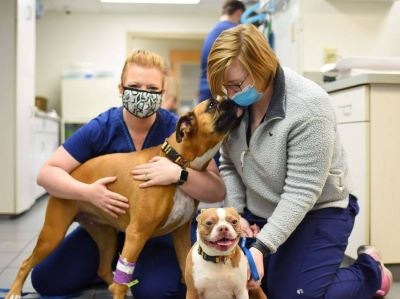
a). Pros: For dogs that experience severe pregnancy or delivery-related issues such uterine rupture, infection, or bleeding, it could be a possibility.
Owners who don’t want their dog to produce any more puppies in the future may also consider this option. It will halt the pregnancy and stop the dog from having any more issues with reproduction.
b). Cons: Also, it will mean that the puppies won’t live, which might have emotional and moral repercussions for both the owner and the dog.
It is a significant procedure that necessitates anesthesia and canine pain control. Risks and consequences include things like infection, hemorrhage, wound dehiscence, and issues with milk production.
FAQs
How much does it cost for a dog to have C-Section?
The cost of a dog C-Section depends on various factors and can range from $500 to $4000.
Is C-Section painful for dogs?
A C-Section is not painful for dogs during the surgery, but they may feel some discomfort and soreness after the surgery.
Is C-Section good for dogs?
A C-Section can be good for dogs that have trouble giving birth naturally or face an emergency situation during delivery.
Can a dog have 2 C-Sections?
A dog can have 2 C-Sections, but it is not recommended due to increased risk of complications and reduced fertility.
Conclusion
A dog C-Section is a surgical option that can save lives and prevent complications, but it also has some risks, costs, and ethical issues. Before choosing this option, you should aware of how much is a dog C-Section surgery and consult with your vet and weigh the pros and cons of each alternative.
- A dog C-section requires careful planning, preparation, recovery, and homecare for the mother dog and her puppies.
- A C-Section surgery can be stressful, emotional, and costly for the owner and the dog. There are some ways to cope with these challenges, such as seeking support and financial assistance.
- A C-Section surgery can be life-saving and joyful, but also difficult and risky. The owner and the vet should be aware of the possibility and choose the best option for the dog and the owner.
Do you have any questions or comments about C-Section surgeries in dogs? Feel free to share them below or contact us for more information. We would love to hear from you!
References:
- Fees and Payment | OSU Veterinary Medical Center. (n.d.). Retrieved June 23, 2023, from – Ohio State University
- Caesarean Sections in Dogs – Post-Operative Instructions | VCA VCA Animal Hospitals. (n.d.). Vca. Retrieved June 23, 2023, from – VCA Animal Hospitals
- Moon, P. F., Erb, H. N., Ludders, J. W., Gleed, R. D., & Pascoe, P. J. (2000). Perioperative risk factors for puppies delivered by cesarean section in the United States and Canada. Journal of the American Animal Hospital Association, 36(4), 359–368. – JAAHA
- Cesarean section in dogs: indications, techniques. (2020, April 27). Retrieved June 23, 2023, from – DVM 360

Julia is a Board Certified Veterinary Nutritionist, practicing veterinarian in a non-profit animal hospital and feline sanctuary located in Rochester, NY. She is also a full-time veterinary advisor at DogLikesBest. She focuses on writing healthcare-related topics including dog foods, treats, veterinary diets, food for specific healthcare features, etc. Moreover, any article on DogNeedsBest that has to concern feline health in any way, goes under her scrutiny before being published.


